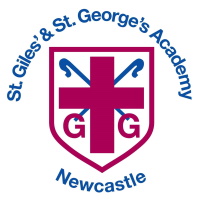English
Phonics
All children in Early Years, Key Stage 1 (and some children in Key Stage 2) follow the Letters and Sounds phonics programme. Children also use the school’s spelling scheme based on “Letters and Sounds,” and teachers ensure that all phonics and spellings are carefully matched to the needs of the child.
Phonics Organisation
We teach phonics from Nursery through to Year 2 and for some children this continues into Key Stage 2.
In Nursery children begin with a focus group for ten minutes each day and in Reception the structured sessions are 20-minutes daily. Children begin to use their phonics in writing and reading sessions and they have real pride in their work.
We teach children to recognise individual sounds, pairs and clusters of letters in each phase. Children also learn to recognise letters, understand the sound they make and then blend them together to create words. Some words which cannot be phonetically sounded out are called ‘tricky words’ and are learnt through sight recognition.
For more information on ‘Letters and Sounds’ and the phonics phases please click on the links below:
http://www.letters-and-sounds.com/what-is-letters-and-sounds.html
http://www.youtube.com/watch?v=5J2Ddf_0Om8 – help with pronunciation
Spellings
Children take home spellings each week which help them to practise phonics covered in class and spelling tests take place on a weekly basis – we ask you to support your child with this.
Alongside this, children in KS1 and KS2 have spelling logs which they work through. The spellings for their unit are practised at home and then tested in school.
Reading Schemes
We ensure that our reading schemes encourage children to apply the new phonological knowledge they have gained by providing them with decodable home reader reading books from schemes such as Big Cat Collins Phonics, Oxford University Press and Project X . Alongside these schemes we use Rigby Star and Oxford Reading Tree and a wide range of appropriately levelled real books to ensure children develop a great love of reading and have an opportunity to embed the application of key reading skills
Reading Organisation
We believe that every child deserves to be successful right from the start – the sooner children learn to read, the greater their success at school. We put reading at the heart of what we do and our ambition for our children is to love reading – a real life skill!
When reading confidently, children in Year 3 – Year 6 use Accelerated reader which links books to on-line comprehension puzzles which check their understanding of the text. Teachers use children’s scores to choose books at the right level as well to check whether children have understood the text. Children gain prizes for the number of books read well. Do encourage your child to read at home for pleasure as well to as to practise their words.
Within school, comprehension skills are explicitly taught through Whole Class Reading using our ‘reading dogs’ to support the children in this.


Handwriting
Handwriting is a taught skill that develops at different rates for different children. All of the teachers in our school put a priority on teaching handwriting and have high expectations for handwriting across the curriculum. Our school uses Penpals for Handwriting to ensure that:
- The importance of handwriting is recognised and given appropriate time.
- The progression of handwriting is consistent across the school.
- Handwriting is acknowledged to be a whole body activity and emphasis is placed on correct posture and pencil grip for handwriting.
- Expectations of left-handed children are equal to those of right-handed children, and appropriate advice and resources are available to ensure that they learn to write with a comfortable, straight wrist.
- Handwriting is linked into grammar, punctuation and spelling in order to practice and contextualise all of the transcriptional and stylistic skills for writing.
- Children learn to self-assess their own writing and develop understanding and responsibility for improving it.
- Children learn to write in different styles for different purposes such as print for labelling a diagram, illustrated capitals letters for creating a poster, swift jottings for writing notes, making a ‘best copy’ for presentation and fast, fluent and legible writing across the curriculum.
